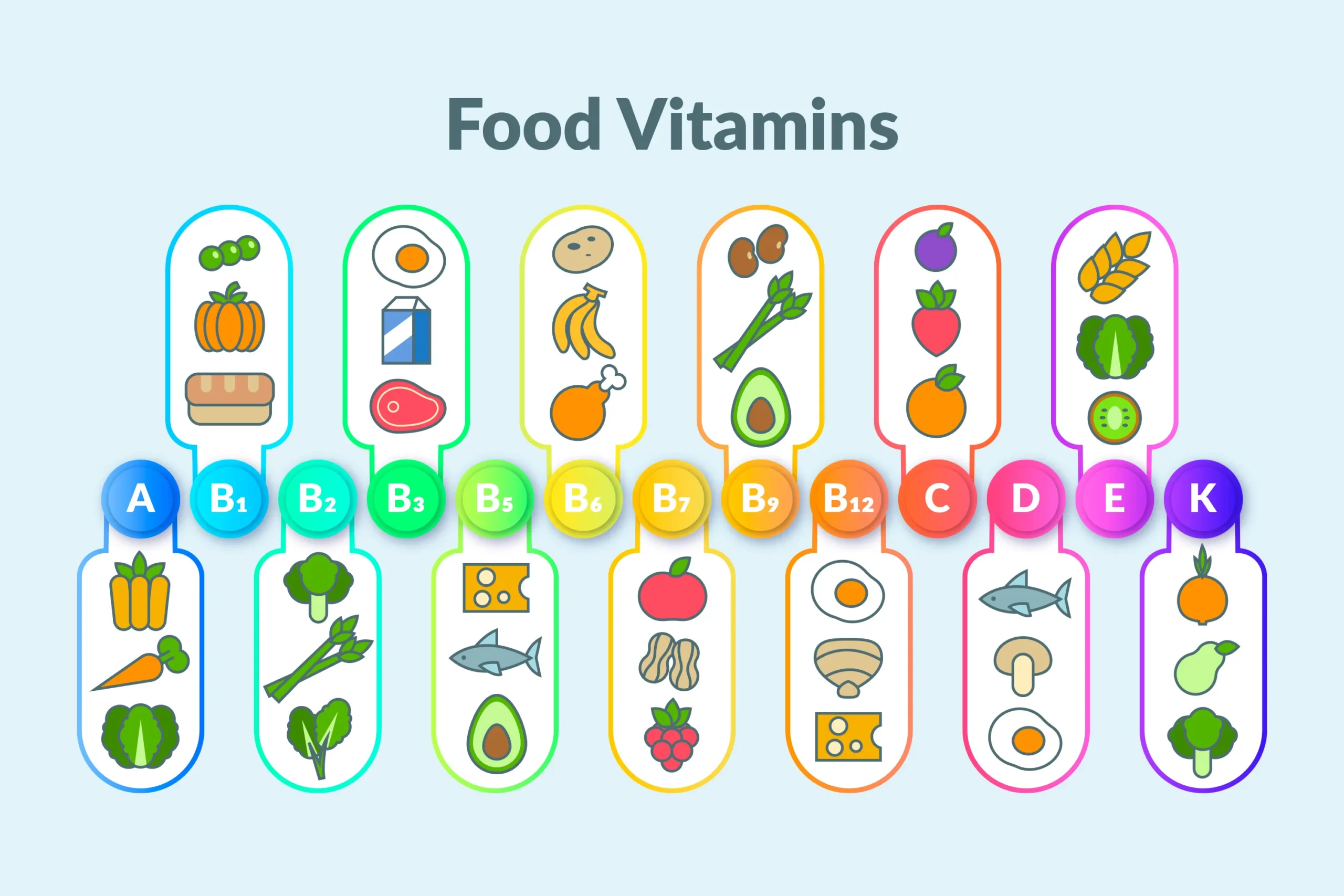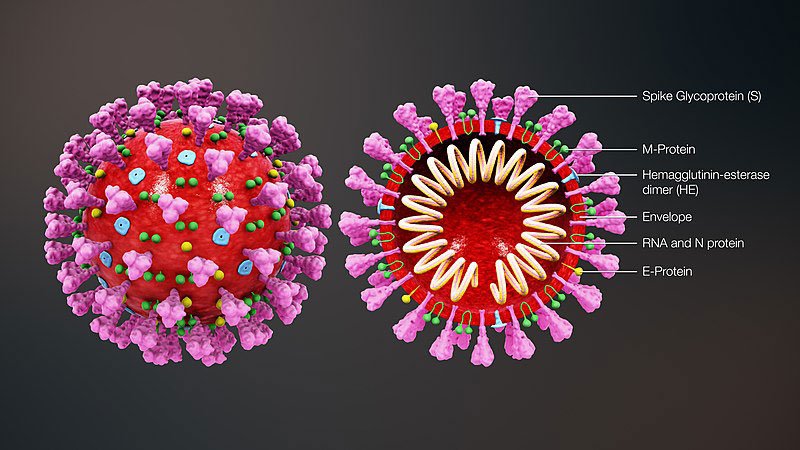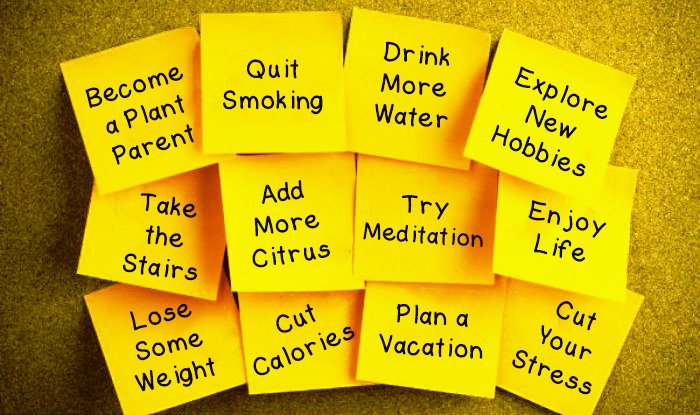Unlocking the Power of Vitamins and Minerals: Your Guide to Essential Nutrients and Daily Needs
In today’s fast-paced world, understanding what fuels our bodies can be overwhelming. With so many vitamins and minerals contributing to our overall well-being, it’s crucial to know how each one works, how much of it we need daily, and which foods are the best sources. This guide offers a clear, science-backed breakdown of essential nutrients, helping you take charge of your health. From recommended daily allowances (RDA) and adequate intake (AI) to the upper limits (UL), we'll walk you through everything you need to know to maintain balance, vitality, and optimal health.
Here is the list of Vitamins and their Benefits and recommendations
| Vitamin | Benefits | Recommended Amount (daily RDA or AI*)** | Upper Limit (UL) per day | Good Food Sources | Did You Know? |
|---|---|---|---|---|---|
| Vitamin A (Retinoids and Carotenoids) | Essential for vision, skin health, and immune function. Lycopene may reduce prostate cancer risk. | M: 900 mcg (3,000 IU), W: 700 mcg (2,333 IU) | 3,000 mcg (10,000 IU) | Beef liver, eggs, fortified milk; beta carotene-rich foods like sweet potatoes, carrots, spinach | High amounts of preformed vitamin A (not beta carotene) from supplements can harm bones. |
| Vitamin B1 (Thiamin) | Helps convert food into energy; crucial for nerve function and healthy skin. | M: 1.2 mg, W: 1.1 mg | Not known | Pork, brown rice, ham, soymilk, watermelon, acorn squash | Thiamin is present in many nutritious foods. |
| Vitamin B2 (Riboflavin) | Converts food into energy, supports healthy skin, blood, and brain function. | M: 1.3 mg, W: 1.1 mg | Not known | Milk, eggs, yogurt, cheese, meats, green leafy vegetables, whole grains | Most people get enough riboflavin in their diet. |
| Vitamin B3 (Niacin) | Vital for healthy skin, blood cells, and brain. Converts food into energy. | M: 16 mg, W: 14 mg | 35 mg | Meat, poultry, fish, fortified grains, mushrooms, peanut butter | The body can make niacin from tryptophan with help from B6. |
| Vitamin B5 (Pantothenic Acid) | Assists in making lipids, neurotransmitters, and hemoglobin. Converts food into energy. | M: 5 mg, W: 5 mg | Not known | Chicken, egg yolk, whole grains, broccoli, mushrooms, avocados, tomatoes | Deficiency may cause neurological symptoms like burning feet. |
| Vitamin B6 (Pyridoxine) | Lowers homocysteine levels, promotes heart health, and supports brain function and red blood cell production. | 31–50 years: M/W: 1.3 mg; 51+: M: 1.7 mg, W: 1.5 mg | 100 mg | Meat, fish, poultry, legumes, tofu, potatoes, bananas, watermelon | Many people may not get enough of this nutrient. |
| Vitamin B12 (Cobalamin) | Supports nerve function and red blood cell formation, lowers homocysteine levels. | M/W: 2.4 mcg | Not known | Meat, poultry, fish, milk, fortified cereals, eggs | Older adults and vegans may need supplements to meet B12 requirements. |
| Vitamin C (Ascorbic Acid) | Supports collagen formation, immune function, and acts as an antioxidant. | M: 90 mg, W: 75 mg; Smokers: Add 35 mg | 2,000 mg | Citrus fruits, broccoli, strawberries, potatoes, bell peppers, spinach | Evidence of vitamin C reducing colds is not conclusive. |
| Vitamin D (Calciferol) | Helps maintain bone health by regulating calcium and phosphorus levels. | 31–70 years: 15 mcg (600 IU); 71+: 20 mcg (800 IU) | 50 mcg (2,000 IU) | Fortified milk, cereals, fatty fish | Many people, especially in northern climates, do not get enough sunlight for sufficient vitamin D. |
| Vitamin E (Alpha-Tocopherol) | Acts as an antioxidant, protecting cells from damage. May help delay Alzheimer’s disease. | M/W: 15 mg (about 22 IU natural or 33 IU synthetic) | 1,000 mg | Vegetable oils, salad dressings, whole grains, nuts, leafy greens | Vitamin E does not prevent wrinkles or aging. |
| Vitamin K (Phylloquinone, Menadione) | Critical for blood clotting and may help prevent fractures. | M: 120 mcg, W: 90 mcg | Not known | Cabbage, liver, eggs, spinach, kale, broccoli | Intestinal bacteria provide about half of your daily vitamin K needs. |
| Folate (Folic Acid, Vitamin B9) | Crucial for cell creation, may reduce risk of heart disease and certain cancers. | M/W: 400 mcg | 1,000 mcg | Fortified grains, asparagus, spinach, broccoli, legumes | Women of childbearing age should take folic acid to prevent birth defects. |
*Recommended dietary allowance (RDA) **Adequate intake (AI)
Source: Data adapted from Harvard T.H. Chan School of Public Health.
Vitamins Minerals

| Mineral | Benefits | Recommended Amount (daily RDA or AI*)** | Upper Limit (UL) per day | Good Food Sources | Did You Know? |
|---|---|---|---|---|---|
| Calcium | Builds bones and teeth, helps muscle function, blood clotting, and nerve transmission. | 31–50: M/W: 1,000 mg; 51+: M: 1,000 mg, W: 1,200 mg | 2,500 mg | Dairy, leafy greens (kale, broccoli), fortified juices, tofu | Absorption rates vary; spinach has binders that reduce calcium absorption. |
| Iron | Supports red blood cells in transporting oxygen. Needed for energy metabolism. | 19–50: M: 8 mg, W: 18 mg; 51+: M/W: 8 mg | 45 mg | Red meat, poultry, eggs, green vegetables, fortified bread, grains | Women need more iron due to menstruation; vegetarians need twice the amount due to lower absorption from plants. |
| Magnesium | Supports muscle function, blood clotting, and builds bones. | M: 420 mg, W: 320 mg | 350 mg (applies to supplements only) | Green vegetables, legumes, seeds, whole grains, milk | Magnesium is stored mainly in the bones. |
| Potassium | Balances fluids, supports nerve and muscle function, and maintains steady heartbeats. | M/W: 4.7 g | Not known | Meat, milk, fruits, vegetables, legumes | A potassium-rich diet may help lower blood pressure. |
| Zinc | Needed for immune function, wound healing, and sense of taste and smell. | M: 11 mg, W: 8 mg | 40 mg | Red meat, poultry, seafood, fortified cereals | Vegetarians may need twice the amount of zinc due to lower absorption from plant foods. |
Source: Data adapted from Harvard T.H. Chan School of Public Health.
Frequently Asked Questions
Some vitamins and minerals can interact with each other and affect absorption. For example, calcium can interfere with the absorption of iron, and zinc can interfere with copper absorption. It's best to avoid taking large doses of calcium and magnesium together, and also avoid combining high doses of vitamin C and B12 at the same time. Consult with a healthcare provider for personalized advice.
Reference: Cleveland Clinic, Healthline.
Women generally benefit from taking vitamins such as vitamin D, calcium, vitamin B12, folic acid, and iron to maintain bone health, energy levels, and reproductive health. Multivitamins designed for women can cover most of these needs.
Reference: Mayo Clinic, National Institutes of Health (NIH).
The best time to take vitamins depends on the type of vitamin. Fat-soluble vitamins (A, D, E, and K) are best taken with meals, while water-soluble vitamins (B-complex and C) can be taken on an empty stomach for better absorption.
Reference: Harvard Health, Mayo Clinic.
Vitamins that support hair growth include biotin (vitamin B7), vitamin D, vitamin E, and iron. These nutrients help improve hair strength, reduce hair loss, and promote overall scalp health.
Reference: Healthline, American Academy of Dermatology.
Vitamins that play a key role in energy production include the B-complex vitamins (B12, B6, B3, B1), vitamin C, and iron. These help convert food into energy and support oxygen transportation in the blood.
Reference: NIH, WebMD.
The time it takes for vitamins to work depends on the specific nutrient and individual factors. Water-soluble vitamins (e.g., B-complex, vitamin C) often show effects within hours to days, while fat-soluble vitamins (e.g., D, E) may take weeks to build up in the body.
Reference: NIH, Cleveland Clinic.
A vitamin synergy chart helps to optimize absorption. For example, pairing vitamin D with calcium improves calcium absorption, while vitamin C enhances the absorption of iron.
Reference: NIH, Harvard Health.
While no vitamins directly target belly fat, vitamin D, calcium, and B-complex vitamins can support metabolism and overall fat loss when paired with a healthy diet and exercise.
Reference: Healthline, WebMD.
Taking prenatal vitamins when not pregnant may cause an excess of certain nutrients such as iron, which can lead to constipation, nausea, or even more serious health risks like iron toxicity.
Reference: Mayo Clinic, WebMD.
Casimir Funk, a biochemist, coined the term "vitamine" in 1912 after identifying a substance that prevented beriberi, which was later known as vitamin B1 (thiamine). His research helped establish the importance of vitamins in nutrition.
Reference: Britannica, NIH.
Taking prenatal vitamins when not pregnant may help with hair and nail growth, but it's generally unnecessary unless advised by a doctor. Long-term unnecessary use can lead to nutrient imbalances.
Reference: Mayo Clinic, Healthline.
Some side effects include nausea, constipation, or an overabundance of certain vitamins like folic acid or iron, which can cause health issues if taken unnecessarily.
Reference: Mayo Clinic, WebMD.
B vitamins (especially B12 and B6), vitamin D, and magnesium are known to support mental health and may help reduce anxiety by regulating mood and brain function.
Reference: Healthline, NIH.
It’s safe for most people to take prenatal vitamins, but they are not necessary unless recommended by a healthcare provider. High levels of certain vitamins (like iron) could pose health risks.
Reference: WebMD, Mayo Clinic.
Iron and magnesium deficiencies have been linked to restless leg syndrome (RLS). Taking iron supplements under medical guidance or ensuring adequate magnesium intake may help.
Reference: NIH, WebMD.
Fat-soluble vitamins (A, D, E, and K) are absorbed along with fats in the diet and are essential for immune function. These vitamins are stored in body tissues and play a role in cell repair and immunity.
Reference: NIH, Harvard Health.
You can find personalized vitamin recommendations through online health quizzes offered by reputable healthcare organizations and websites like the Mayo Clinic or WebMD.
Reference: WebMD, Mayo Clinic.
It’s generally safe to take prenatal vitamins for a short period, but prolonged use should be discussed with a doctor, as excess nutrients like iron can build up and cause issues.
Reference: WebMD, Mayo Clinic.
When you start taking vitamins, your body begins to fill nutrient gaps, potentially improving energy levels, immunity, and overall health. However, excess intake of certain vitamins can lead to toxicity.
Reference: Cleveland Clinic, NIH.
Ideally, you should start taking prenatal vitamins before conception or as soon as you start trying to conceive to support fetal development, especially folic acid for preventing neural tube defects.
Reference: Mayo Clinic, WebMD.
Women in their 30s may benefit from taking vitamin D, calcium, folic acid, iron, and omega-3s to support bone health, reproductive health, and overall well-being.
Reference: NIH, Healthline.
A vitamins chart typically outlines key vitamins such as vitamin A (eye health), B vitamins (energy and brain function), C (immune support), D (bone health), and E (skin health).
Reference: NIH, Harvard Health.
Water-soluble vitamins (B and C) can be taken anytime, but fat-soluble vitamins (A, D, E, K) should be taken with food for better absorption. Iron is best taken on an empty stomach but can be taken with food if it causes nausea.
Reference: NIH, Harvard Health.
Sources: NIH, Harvard Health, Mayo Clinic, WebMD. Cleveland Clinic, Healthline, Britannica, National Institutes of Health (NIH).
Disclaimer:
No content on this site, regardless of date, should ever be used as a substitute for direct medical advice from your doctor or other qualified clinician.







































